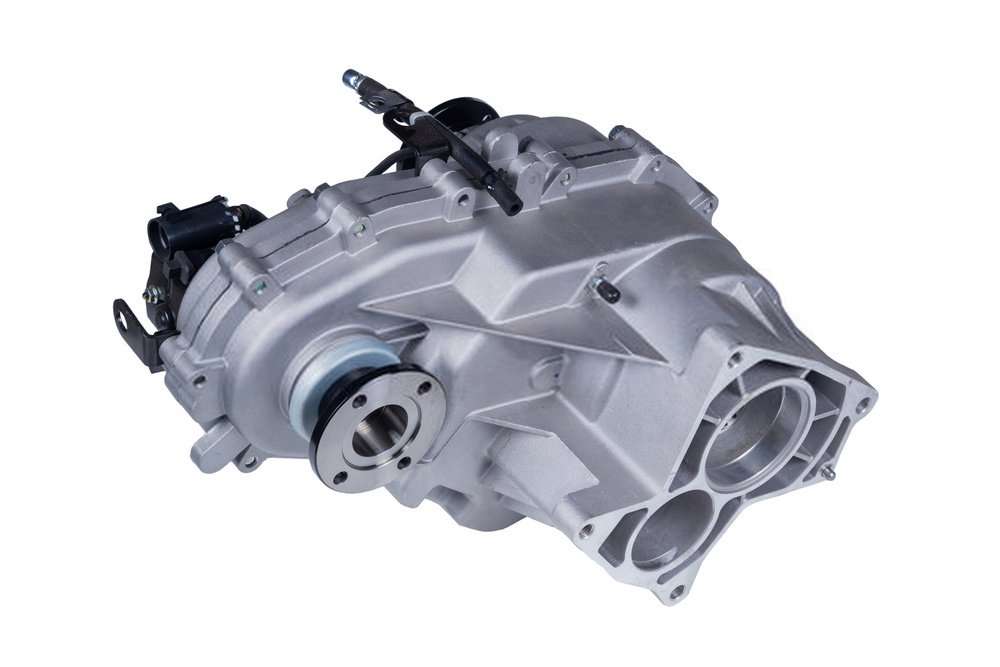The Chevy Silverado is a full-size pickup truck from GM and one of the most popular vehicles in its segment. It’s been the bestselling vehicle in America for a few years running now. It’s no wonder — it’s got enough power for any job you’ll throw at it, and enough style to turn heads everywhere you go.
However, like all vehicles on the road today, there are a few common issues that crop up — especially if you plan to keep your vehicle for the long haul. Here are some of the common 2002 Chevy Silverado transfer case problems.
The transfer case is one of the most complicated parts of a modern truck. It’s a bit of a strange name since it doesn’t transfer anything. Instead, it splits the power between the front and rear wheels. But it can also split your attention when something goes wrong.
As any mechanic will tell you, Chevys are some of the most reliable vehicles on the road, but that doesn’t mean they don’t have their own set of problems.
The transfer case is a complex piece of machinery that can cause headaches for even the most experienced mechanics — which is why you should familiarize yourself with this guide for Chevy Silverado transfer case problems and how to fix them.
If you’re able to identify your transfer case problem, you’re one step ahead of many other people who end up paying for a repair that they could’ve done themselves. But first, you need to figure out exactly what’s wrong.
The transfer case is a dual-drive system that helps the vehicle’s front and rear axles to transfer power to the wheels. If the transfer case breaks, it can cause the front and rear wheels to have different speeds. You will usually notice a grinding or a clicking sound from the drivetrain when the transfer case is broken.
Jump to
What is Transfer Case?
The transfer case, also known as a transfer case, transfer case, or transfer gearbox, is a part of a four-wheel drive or all-wheel drive (4WD/AWD) vehicle that switches between two-wheel drive and four-wheel drive.
A transfer case is a component in a four-wheel-drive system that distributes power between the front and rear axles. In some vehicles, the transfer case is integrated into a gearbox. Transfer cases are used in both on-road and off-road vehicles such as pickup trucks, sports utility vehicles (SUVs), off-road vehicles, full-size vans, and heavy equipment.
The transfer case on your Chevy Silverado has two main jobs. It helps your truck climb steep inclines, and it allows you to shift between two- and four-wheel drive. If your Chevy Silverado is having trouble climbing hills or shifting gears, it might be time to install a new transfer case.
Chevy Silverado Transfer Case Problems & Solutions!
Here are 5 most common transfer case problems and their easy fixes:

1: Transfer Case Leaking seals
If the transfer case begins to leak, the fluid will begin to empty, and eventually, your vehicle will stop functioning.
If you’re having transmission fluid leaking from your Chevy Silverado transfer case, you probably don’t want to wait around for it to destroy your transmission. A faulty transfer case seal can cause a lot of damage if it isn’t taken care of immediately. You don’t need to replace the entire transfer case just because of a faulty seal.
Finding the source of the leak is essential to fix the leak properly. The best way to find the source of the leak is to remove the transfer case and put it in a bath of ATF and distilled water to check for any leaks.
The Chevy Silverado Transfer Case Leaking seals problem may be caused by the following conditions:
- Worn or damaged rubber seals that allow the lubricant to escape.
- A damaged or worn seal inside the transfer case.
- An improperly installed seal.
- A defect in the transfer case itself.
Solution:
If your transfer case is leaking, you’ll need a new transfer case seal. You can replace the seal on your own with a few simple tools.
If the leak is around the front pump, you might be able to fix it by tightening the bolts on the pump.
2: Transfer Case Noisy gears
The transfer case has gears that can make some noise. The noise is usually the result of the gears grinding when you move the shifter from Park to Drive or Reverse.
The most common reasons for a transfer case to make noises are a worn front pump shaft bearing or a worn rear pump shaft bearing, worn or damaged front pump gears, or the rear pump gears are worn out or damaged.
Solution:
First, check to make sure that your oil is full and changed regularly, as this will be key to ensuring quiet operation for many miles to come.
If your gears are old and worn out you have to replace them with new ones for smooth running.
3: Loose bolts
Loose bolts are a major problem in the transfer case of a Chevy Silverado. If these bolts are loose and don’t go back into place, the entire transfer case can come out of the back of the truck and onto the road. A loose bolt, or a missing bolt, in the Chevy Silverado Transfer Case, can cause a warning light on the dash and, in some cases, a failure of the transmission to shift gears.
Solution:
Looking at the underside of the transfer case is the best way to determine if this problem exists. Push in on the center console with a mallet and gently pull out the rear end of the transfer case to inspect for loose bolts.
If there are any loose bolts, replace them with new ones. To work around loose bolts in the transfer case, you will need to use the proper torque wrench.
Since loose bolts are usually caused by corrosion, the best thing you can do to avoid loose bolts is to keep your Chevy Silverado Transfer Case clean and dry.
4: Fluid Problems
The fluid in the transfer case acts as a lubricant for the gears, bearings, and seals. If the fluid in the transfer case is low, then the gears won’t be lubricated and will wear out prematurely. Moreover, If the fluid is too thick, then it can lead to the transmission not being able to shift gears smoothly.
The powertrain control module, or PCM, monitors the fluid level of the transfer case through the speed sensor. If the PCM senses there is not enough fluid, it will set a code and illuminate the Check Engine Light.
Solution:
You should make sure to regularly check your transfer case fluid level. If it’s low, fill it up and add fluid until it reaches the ‘Full’ mark on the dipstick. Make sure you check the fluid level again in a few days. If the fluid is dirty or muddy, you should have it flushed and refilled.
5: Clogged lines in Transfer Case
A clogged transfer case can cause a variety of different issues. For example, if your transfer case is clogged, you may not be able to shift into a four-wheel drive. You may also notice that your truck doesn’t have enough power when you try to accelerate.
When you’re dealing with a clogged line, it’s important to take action right away. If you don’t, you’ll have some serious problems down the road.
The most common cause of transfer case failure in Chevy Silverado is the use of motor oil that does not meet the requirements of the transfer case. Check with your local auto parts store to ensure the oil you are using is labeled for use in your transfer case. You can also check the owner’s manual for additional information.
FAQs
How do you replace a transfer case?
Replacing the transfer case can be quite a daunting task. Therefore, it’s recommended that you take your vehicle to your local mechanic for repair or a dealership for replacement. You can also DIY if you have the right tools, patience, and basic know-how on transfer case replacement.
How much does it cost to replace the transfer case?
The cost of transfer case replacement will vary depending on the parts that need replacing. If you are looking to DIY, or have it replaced by a mechanic, it’s best to call local mechanics and get quotes. If you notice there are problems after the vehicle has been in an accident, it’s recommended that you take it to a mechanic or dealership for diagnosis.
How long does it take?
The Chevy Silverado transfer case replacement can take between 1-5 hours depending on your experience and the year of your pickup.
The majority of repair shops should be able to replace it for you at a fair price.
How do I know if a transfer case replacement is needed?
You should be able to figure out whether you need to replace the transfer case based on the symptoms you are experiencing. For example, if the engine is not getting enough power, or your vehicle is having trouble shifting gears, then you might need to replace the transfer case.
Final Thoughts 2002 Chevy Silverado Transfer Case Problems
The Chevy Silverado is a popular truck, and it’s no surprise that there are still some lingering issues with the transfer case even after years of improvement.
The transfer case does not require much maintenance. However, when there is a problem with the transfer case, you will need to fix it right away. The problem could be severe and could cause a lot of damage to the car.
If you know what to look for, you can fix many transfer case problems on your own and save yourself a lot of money in the long run.
The transfer case is a complicated part of the Chevy Silverado’s transmission system, and it can malfunction if not handled correctly. Like many automotive systems, the transfer case consists of several parts that can break or fail over time. You can repair a faulty transfer case yourself with a few tools and some basic knowledge of car repair.
If you’re not sure what’s wrong with your transfer case, it’s best to go to a mechanic or dealership that has the right equipment to diagnose the problem.
We hope you found this article helpful and informative. We wish you the best of luck in solving your Transfer Case problems in your Chevy Silverado.

My name is Tom Harris, founder of this blog. I’m a mechanical engineer with 20 years of experience in the automotive industry. I’m here to help you with your vehicle’s problems, easy fixes and share my insights and experience so that you can enjoy your rides more.

